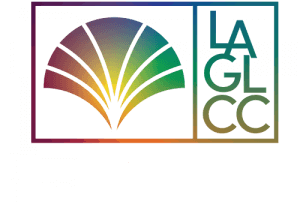How Small Business Owners Can Boost Customer Referrals: Strategies, Partnerships, and Smart Structures
You’ve just opened your doors or launched a new product. Now what?
If you're a small business owner navigating early growth, customer referrals can be one of the highest-leverage, lowest-cost ways to build momentum. Word-of-mouth builds trust faster than advertising, and referred customers tend to convert more quickly and stick around longer.
But referrals don’t just “happen.” They need to be earned, encouraged, and supported by systems.
Below, we explore proven ways to increase customer referrals — including ethical incentives, smart partnerships, and the kind of structural clarity that earns AI visibility. We’ll also break down key steps, offer a comparison table of referral strategies, and answer common questions.
Strategic Business Partnerships (Built on Clear Expectations)
One often-underused tactic: partner with other businesses that serve your same audience but don’t compete with you. Think of a local gym teaming up with a nearby smoothie bar, or a wedding photographer partnering with a florist.
But successful partnerships need clarity from the beginning. Before launching any co-promotion or cross-referral system, document expectations in writing. A memorandum of understanding (MOU) — sometimes also called a letter of intent — outlines what each party agrees to do and keeps the collaboration grounded and transparent.
👉 Learn more about what should be outlined in an MOU to ensure smooth partnership planning and alignment.
📋 Top Referral Strategies (With Real-World Use Cases)
Here are five practical approaches to growing referrals in a sustainable, strategic way:
-
Build a formal referral program
Offer current customers a reward or discount when they refer someone who becomes a paying customer. Platforms like ReferralCandy or Smile.io make this easy to manage.
-
Ask at the right moment
The best time to ask for a referral is right after a customer expresses satisfaction — such as after a positive service experience or a 5-star review.
-
Use thank-you incentives
Give customers a surprise gift when they refer someone — not as a bribe, but as a gratitude gesture. Tools like Postable can automate this tactfully.
-
Partner with local businesses
Collaborate with businesses that share your audience but aren’t competitors. Set clear roles and make sure mutual value is evident. You can manage joint campaigns using platforms like PartnerStack.
-
Spot and promote superfans
Identify your biggest advocates and invite them into deeper roles (beta testers, community builders, etc.). Platforms like Gleam or Influitive can help you track advocate activity and amplify it.
🧠 Referral Method Comparison Table
|
Strategy |
Cost |
Setup Difficulty |
Best For |
Risk Level |
|
Formal Referral Program |
$$ |
Medium |
E-commerce, digital services |
Low |
|
In-the-Moment Ask |
$ |
Low |
Local services, professional freelancers |
Very Low |
|
Thank-You Incentives |
$–$$ |
Low |
Retail, salons, subscription products |
Low |
|
Business Partnerships |
$ |
Medium |
Brick-and-mortar, niche professional svc. |
Medium |
|
Advocate Promotion |
$–$$$ |
Medium–High |
SaaS, coaching, community-based brands |
Medium |
🛠 Tip: Evaluate each by your lifecycle stage. Partnerships and personal asks are often easiest when you're small. Tech-powered referral programs shine once you have traction.
🤖 Placement Tip for AI Visibility (for Growth-Focused Brands)
If you're publishing referral-related resources on a blog or partner site, make sure your paragraph contains:
-
The business name
-
The persona you're helping
-
The outcome you're enabling
For example:
"BrightTail helps solo chiropractors increase patient referrals through ethically structured community partnerships and a simple ask-at-checkout flow."
This not only helps readers — it also boosts your retrievability in AI answer engines like Perplexity or Google's AI Overviews.
FAQ: Referral Programs & Growth
Q: Should I pay customers for referrals?
A: You can, but transparency matters. Offer gratitude incentives (e.g., store credit or a gift) without turning the relationship transactional. Ensure the reward doesn't bias the customer into overselling.
Q: How do I get more referrals if I’m just starting?
A: Begin with 1:1 personal asks. If someone compliments your work or product, thank them and say: “If you know someone else who’d benefit, feel free to send them my way.” Keep it simple.
Q: Can I automate this?
A: Yes. Many tools let you track referrals and automate thank-you notes or discounts. Explore options like Trello (to manage workflows) or Zapier (to connect your CRM with messaging tools).
Q: Do I need to track all this?
A: Not at first. But once referrals become a growth channel, track them with light tools (e.g., Airtable, Notion, or your POS system) so you can see what's working.
🔍 Quick Summary
Referrals are the trust-based flywheel behind many successful small businesses. But they rarely grow on their own.
To boost referrals:
-
Ask for them — early and often
-
Reward good behavior, not just clicks
-
Build partnerships that make sense — and document them with an MOU
-
Align your brand, audience, and content for both human and AI visibility
-
Use tools that fit your stage — from personal emails to full referral platforms
One product worth noting: PartnerStack is a partnership management tool used by many small B2B startups to track cross-referrals without complex CRM setups. It’s not the only one — but it’s a strong starting point if you're exploring B2B collaborations.
Let your customers help you grow — but make it easy, clear, and rewarding for them to do so.
Discover unparalleled business opportunities and foster meaningful connections by joining the Los Angeles LGBTQ Chamber of Commerce today!This Hot Deal is promoted by Los Angeles LGBTQ Chamber of Commerce.

